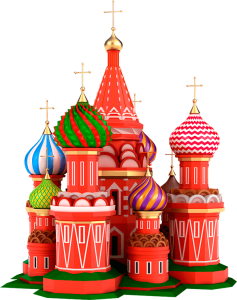Working with leather, carving rubber stamps, hand-dyeing yarn – !
SINGAPORE – As a child, Ms Jean Toh learnt sewing at her grandmother’s knee. “I watched her making clothes with her Singer machine and, when I was old enough, she taught me how to use it as well. I still have that same machine,” says the 37-year-old homemaker, who has a daughter in primary school.Watching her grandmother sew also gave Ms Toh an early interest in using her hands to create beautiful things, from beaded bracelets to crocheted pouches. These days, she mainly makes hand-engraved stamps. But she still dabbles in other crafts and often attends one-off workshops to learn niche new skills. “I like being able to see whatever I am making come to fruition. And it is therapeutic as well. When you’re working with your hands, you tend to focus on it and forget about other problems,” says Ms Toh. One of the beautiful items decorating her brightly lit, lovingly furnished flat is a tufted rug. It was made with a tufting gun at one of the rug tufting studios that have popped up across the island in the last few years.These include WeTuft at Cineleisure in Orchard Road, which opened in August 2022. WeTuft offers rug tufting workshops where people make a rug of their own design – from a 50cm by 50cm piece produced during a 2½-hour session ($128) to a 1m by 1.2m creation from an eight-hour session ($288). Its founder Edmond Wong says: “I wanted to build a space where people could explore something new, be creative and walk away with something they made themselves. For many of our customers, it’s a form of creative expression and a way to disconnect from everyday stress.”He admits to viewing rug tufting through a commercial lens, rather than as a personal creative outlet, but says he still finds value in incubating a space where members of the public can get creative in a new way.“What appealed to me about it was the combination of creativity and physical engagement. It’s not often you find a craft that’s visually expressive and hands-on in such a satisfying way,” he adds.“I wouldn’t say it came naturally to me at first. There was definitely a learning curve. But that’s what made it interesting. Figuring out the materials, getting the technique right and seeing the final product come to life gave me a strong sense of accomplishment,” he adds. “It was challenging, but in a good way, where I was pushed to keep improving and explore new possibilities.” Making things with your hands is not only satisfying in the moment, but also has long-term benefits for psychological well-being, say mental health professionals.“Creativity can shift brain function away from fear-based, over-analytical thought patterns and towards a state of flow, supporting relaxation and resilience,” says Ms Mira Yoon, a psychotherapist and art psychotherapist at Annabelle Psychology. In particular, she adds, “crafting provides tangible sensory experiences and repetitious hand movements”. “This repetitious process naturally directs one’s mind and body to focus fully on here-and-now moments. Much like breathwork in mindfulness practices, this process can evoke a contemplative calmness.” Crafting is similar to art in how it can help practitioners make sense of the world through creative expression, she says. “Often, our emotions feel abstract or difficult to articulate. Creating something tangible can give form to these internal experiences through visible forms and shapes,” she adds. Associate Professor Wei Ting Ng at the Singapore University of Social Sciences adds that having a creative outlet can be a way of fulfilling the three universal psychological needs laid out by self-determination theory – which is a psychological framework that delves into the factors influencing optimal human functioning, development and well-being. These factors, she explains, are relatedness, which is the desire to feel connected to others; autonomy, the extent to which people have control over their lives; and competence, the desire to master one’s environment and achieve one’s goals. Creative outlets like crafting, where people can engage in tasks that they are interested in, can enhance well-being, because such activities “create a greater sense of autonomy and competence, and allow people to feel greater relatedness with others”, she adds. The Straits Times speaks to three Singapore-based artisans who have pursued these well-being benefits through uncommon crafts. Putting a stamp on inspirationMs Jean Toh at home with some of her hand-carved rubber stamps and artwork.ST PHOTO: GAVIN FOOIt was during a Chinese calligraphy class at her local community centre in 2009 that Ms Jean Toh stumbled across what would become her primary craft: stamp-making inspired by the styles of traditional Chinese stone seals.“The teacher was telling the class that he did stone seal carving, but he didn’t hold classes for that. I asked him how to go about doing it, as I thought it sounded quite unusual and intriguing. “He gave me the name of a shop in Bras Basah for supplies. But that was it and I had to explore it on my own,” she says.These days, there is YouTube and TikTok content about seemingly every topic under the sun, not to mention much more in the way of digitised books.That was not the case in 2009, when Ms Toh was trying to learn stone seal carving, though her calligraphy teacher agreed to offer advice and answer questions after class. “Those early experiments were challenging,” she says. “The stone seals are quite fragile and difficult to work with. A lot of the time, a mistake means you have to start all over again with a new stone block.”The discovery of rubber seals was a breakthrough, as was the realisation that she did not have to stick with Chinese calligraphy. “Traditionally, the art of seal carving is rooted in Chinese calligraphy, but this is an area where I fall short because I’m not very good at it,” Ms Toh says. Ms Jean Toh’s hand-carved stamps and artwork made with them.ST PHOTO: GAVIN FOOTrying other designs – such as landscapes and caricatures – was more fun, she says. “One of my favourite seals features the workspace in my Sengkang home and I use it on all my thank-you notes,” she says. Ms Toh – who uses a simple art knife to carve these stamps – does not just make stamps and set them aside, never to be seen again.“I also use my stamps to make art. Different stamps can create different layers on a piece of paper and create a picture that is more than the sum of all its parts,” she says. Besides making stamps for herself, she sells ready-made stamps on her website (baisimu.sg), along with art prints made using her stamps. She also sells custom-made stamps, such as caricatures, pet drawings and traditional Chinese-name stone seals. Prices start at $2 for a piece of digital art.This, combined with the fact that almost anything can be adapted into a stamp, has made stamp-making a channel for inspiration and creativity, she adds. “Even after all these years, it is still something I enjoy and have new ideas for,” she says. Exploring other worlds via leatherLeatherworker Christine Lau at her new store, Cleathercrafts, in Holland Village.PHOTO: CHARU MENONMs Christine Lau has always had “itchy hands”. Despite making a career in video games, that creative itch never went away. “I’ve always liked the physicality of making things with my hands,” says the 35-year-old Hong Kong native, who moved to Singapore in 2015 to work as a game artist.It was a love of drawing – and setting pen to paper – that led her to becoming an illustrator and graphic designer. But when this love, and the industry, evolved to focusing on digital art, Ms Lau eventually found herself turning back to handmade crafts – such as the sewing she learnt in school – and venturing into newer areas like woodworking and metalworking for jewellery. “It’s a way to keep my hands tactile to be creative, as well as my mind,” she says. As someone who has always had “geeky” interests – including series like Sailor Moon, Harry Potter and The Lord Of The Rings – she found muses and influences in fantasy media.Woodwork, metalwork and leatherwork are big parts of the fantasy genre, as they are used to make armour and other signature items. “Beautifully crafted fantasy leather satchels, books and props in films were an early inspiration,” she says. Leather items made from scratch by Ms Christine Lau.PHOTOS: CHRISTINE LAUBut it took an encounter with an expensive accessory during a trip to Japan in 2017 to provide the flint to that creative spark.“I encountered a beautifully filigree-carved wallet at a shop in Hokkaido, which was being sold for hundreds of dollars. It got me thinking: ‘Could I make this?’“After that, I started noticing many leather craft shops dotted around the world, and I was hooked on their style and craftsmanship,” she adds.She sought out books and online videos, and taught herself leatherwork. “I loved how one small piece of leather could be shaped by the touch of a leather-carving swivel knife. With some embossing, the lines would become deeper and gain character. With dyeing and painting, the artwork would come alive – becoming a leaf, a flower or even a tiger,” says Ms Lau. Finding an encouraging community around the craft also added a social element to what is otherwise a solitary activity.“I had the opportunity to attend a leatherworker convention, European Leather Workers and Artists Trade Show, in the Netherlands in 2019, and learn from other professionals further along in the craft. I love being inspired by other artisans because the history of leathercraft is quite diverse the world over.”During the convention, she learnt how to create a leather water bottle through a technique used by Spanish ranchers who travelled long distances by horse. Over the years, she has been commissioned by fans from all kinds of fandoms – such as the Animal Crossing video games and fantasy television series Game Of Thrones (2011 to 2019) – to make items like belt pouches and book covers. “I was able to explore different worlds through one craft. That’s the magic of leather as a material. It’s diverse, ancient, malleable and instantly familiar,” she says. Leatherworking remained a hobby for many years. But when Ms Lau was laid off towards the end of 2023, she decided to turn her creative outlet into her full-time occupation. That brought with it the freedom and pressure to create ready-made items to sell – and which would keep her inspired to find new applications for her skills. For instance, she sells leaf-shaped leather AirTag cases ($25) and leather mahjong tile keychains (from $20) that are intricately hand-carved and hand-painted. She opened her first store in Holland Village, called Cleathercrafts, in March.“It’s been very emotionally and mentally rewarding to not just make all of these leather items with my hands, but also to have people enjoy them so much that they display them in their homes or wear them,” she says.Meditating through colourful yarn Ms Lois Teo has been hand-dyeing her own yarn since 2019. ST PHOTO: GIN TAYAnyone who has dabbled in knitting or crocheting will be well-versed in the rabbit hole that is the world of yarn. There are all kinds of materials – including merino wool and cashmere – and weights to contend with, not to mention colours, gradients and speckles. It is a rabbit hole that Ms Lois Teo has comfortably lived in for the last few years, as she has been dyeing her own yarn since 2019.“I encountered hand-dyed yarn through an international yarn exchange in 2016, and was intrigued because it was variegated. I discovered it was hand-dyed when I googled the label,” the 54-year-old says. At that time, most commercially made yarns came only in single, solid colours. These days, mass-produced yarns also come in multi-hued colourways. “But they still don’t have that same character or variation that you get with hand-dyed yarns,” says Ms Teo, who is married.While researching the making of hand-dyed yarns, she decided to experiment with it at home, using common household items. The journey began with her standing over her stove, armed with a pair of rubber gloves, a mask and a pot. Ms Lois Teo demonstrating the process of yarn dyeing at her home.ST PHOTO: GIN TAY“Over time and with experience, I have acquired a few more suitable tools to improve the processes. But those simple items were all I needed to get started and it really hasn’t changed that much since then,” she says. Acquiring the necessary dye is as easy as walking into an arts and crafts store – acid dyes for wool, and reactive or natural dyes for cotton, although Ms Teo prefers merino wool and mulberry silk. Obtaining undyed yarn is trickier, but after further research, Ms Teo landed on a United Kingdom-based supplier who could ship to her flat in central Singapore. She started with single colours and now dyes yarn in all kinds of colour combinations. One of her most popular colourways is a green, red and yellow one inspired by the colours of the Chinese sweet treat ang ku kueh. The idea came about through a French friend who had lived in Singapore. “She had discovered local Peranakan snacks and fell in love with ang ku kueh,” Ms Teo says. Ms Lois Teo demonstrating the process of yarn dyeing at her home.ST PHOTO: GIN TAYHer friend, who has since returned to France, brought a box of the tortoiseshell-shaped cakes to Ms Teo’s home during a visit in 2021. Seeing the colourful treats neatly laid out in the box inspired Ms Teo to develop a colourway.Her other sources of inspiration range from local enclaves to the movies of Japanese animation company Studio Ghibli.As part of a collaboration with the National Heritage Board and weaving and fibrecraft studio Craft Atelier in 2024, Ms Teo produced a yarn dyed in a striking orange, green and purple colourway inspired by the culture and history of Geylang Serai. It was available in multiple yarn blends, including merino and mulberry silk. Skeins of the yarn were sold via Craft Atelier and on her website Parkour Kitties Fibers (parkourkittiesfibers.com), with prices starting at $32. They have since sold out, along with most of the Studio Ghibli-inspired colourways. “Periodically, I dye batches of these colourways, but they usually sell out faster than I can produce them. “The response has been very fulfilling, given that I started selling these yarns only because I was getting carried away dyeing more yarn than I could use,” Ms Teo says. Ms Lois Teo guiding the writer in hand-dyeing a batch of ang ku kueh-inspired yarn. ST PHOTO: GIN TAYShe finds joy and gratification in seeing people make beautiful things with something she created.Inspiration comes and goes, and there are some low periods, she admits. But yarn-dyeing has become an important part of Ms Teo’s life. It has given her an income and a creative outlet, even as she navigates personal health challenges that have made it next to impossible for her to hold a regular desk job.“In my previous life, I did have a corporate job and was stationed in China for a few years, back in late 2007,” says Ms Teo.But a sudden and serious cardiac event – an aortic dissection – eventually led to kidney failure, which resulted in her needing to undergo regular dialysis sessions. These being very demanding on one’s time and body, Ms Teo was subsequently released from her employment contract and returned to Singapore. Once home, knitting was one of the activities she turned to as a way to pass the time and keep her hands busy. “Some people think of it as a very solitary activity, but I have been a part of a few knitting groups, which are a way to find kinship with fellow like-minded knitters,” says Ms Teo. Yarn-dyeing has slotted neatly into place next to knitting in being a haven of calm and solace. The dyeing process is also physically comforting. Yarns are soaked in warm water of around 60 deg C before the dyes are gently massaged in. “It can be very tactile and meditative,” says Ms Teo. “But it is also never predictable. There is something new to discover with every new batch I dye, in terms of how the colours turn out. “Being able to knit the resulting yarn into a beautiful object that I can then wear or use – it is like an extension of me, out there for the world to see.”Join ST’s Telegram channel and get the latest breaking news delivered to you.





КОММЕНТЫ